Gravely History: Strong Roots Run Deep
When Gravely was a bit older and out of school, he became a salesman for Eastman Kodak Company in hopes of learning as much as possible about the photography business. Afterward, he partnered with a photographer named Charles R Thomas and created their own portrait business in West Virginia around 1900.
1902 came around, and it was a life-changing time as he met and married Elizabeth Downie; the union would produce five children over the years. While balancing the newlywed life, Ben opened a photography studio in Charleston, West Virginia, with Elizabeth's cousin Marguerite Moore. The two named the company Gravely & Moore Photographers, which was very successful and stayed open for 60 years, closing its doors in 1963.
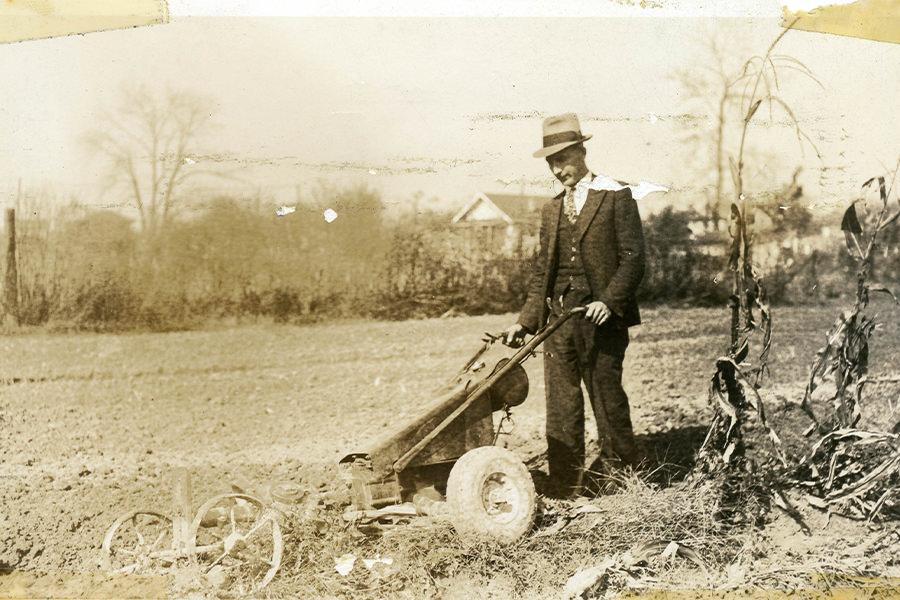
Before we get too far ahead, we'll rewind to 1911, which marked the year that the Gravely name began its association with outdoor power equipment. Gravely became increasingly involved with his family's garden and began designing and building a power-driven walk-behind plow.
The machine was different from the plows of the period. His design was made with a Maytag washer motor placed on a hand-push cultivator. While the motor plow worked, Gravely wasn't satisfied with its power and usability.
He kept innovating the design until he made his first prototype of the modern Gravely tractor of today. This was a powered hand plow on a single tractor wheel with belts powered by an Indian motorcycle engine. He spent five years creating his new invention, and on December 5th, 1916, Gravely received the patent for his single-wheel tractor plow, better known as the Gravely Motor Plow.
After the United States exited World War I, a gentleman named McClellan provided Ben Gravely with a machine shop to build out and design his products. The shop was where Gravely produced all the engines and assembly. The design was continuously improved for the next six years until the new Model L was introduced.
This is where the engine was built, leading Gravely and McClellan to assemble the first tractors, weighing about 180 lbs. The design could have been better, but the tractor was continuously improved for the next six years.
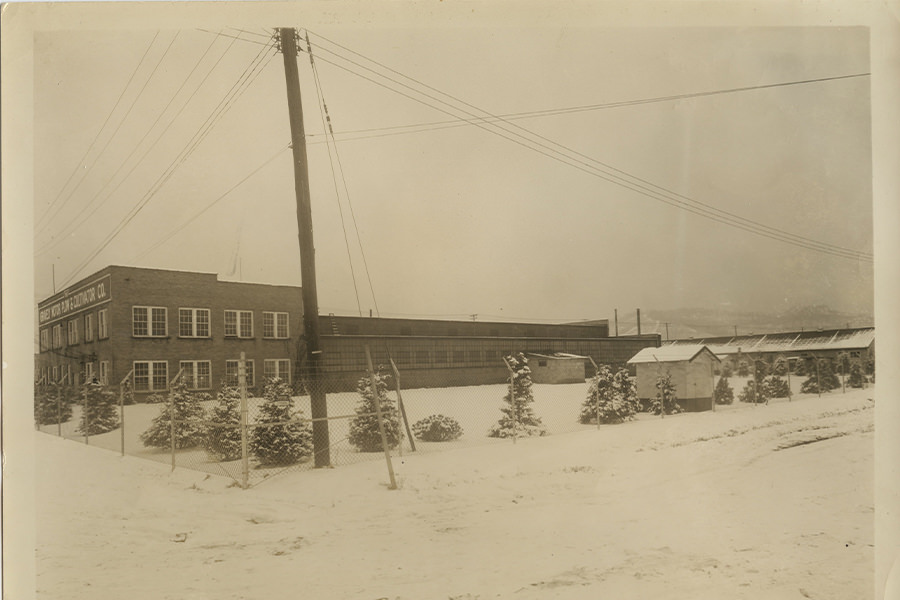
Benjamin Gravely eventually obtained business investors from Charleston to finance this machine. With $200,000 worth of stock to start, the Gravely Motor Plow and Cultivator Company was officially incorporated. The company plant was built in Dunbar, West Virginia, where the first Model D single-wheeled cultivators rolled off the factory floor in 1922, costing customers $150 apiece. Gravely tractors were made by hand until 1927, when an assembly line was implemented. This means each employee was building about one tractor per day by hand.
As production continued Benjamin Gravely had to be his own sales team. His strategy was to pack up his vehicle full of motor plows and head into agriculture-heavy areas in Florida. Still, he'd typically sell out before getting there and be forced to head back to Dunbar to reload.
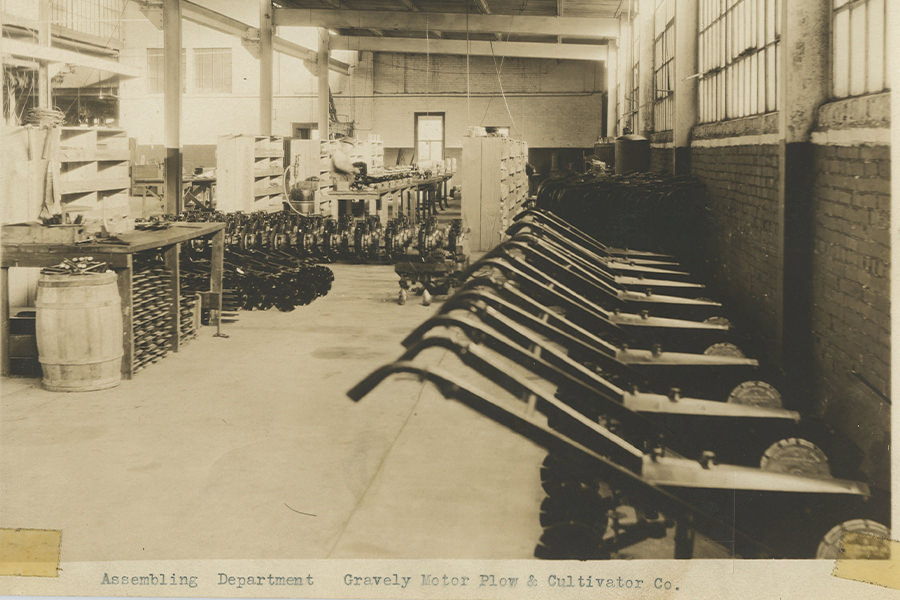
Moving forward, the company turned a profit for the first time in 1928 after improvements were made to the Model D tractor and the first mowing attachment was introduced, with more attachments being introduced throughout the next seven years. Even with more attachments, the Gravely Motor Plow and Cultivator Company saw losses after 1928 with the start of the Great Depression.
Margins became so tight that Gravely sent out letters with a quick sales pitch as a last-ditch effort to lure businessmen into investing so the company could live on and continue to grow. Unfortunately, the effort wasn't received with the funds he had hoped.
It was reported that as the Great Depression continued, Gravely struggled to pay his employees and offered stock in the company to settle his debt to them. Even with the considerable struggle the company faced in the early year's mechanical errors with the Model L and a profit deficit from 1922 to 1936 (1928 being the exception), the brand persevered.
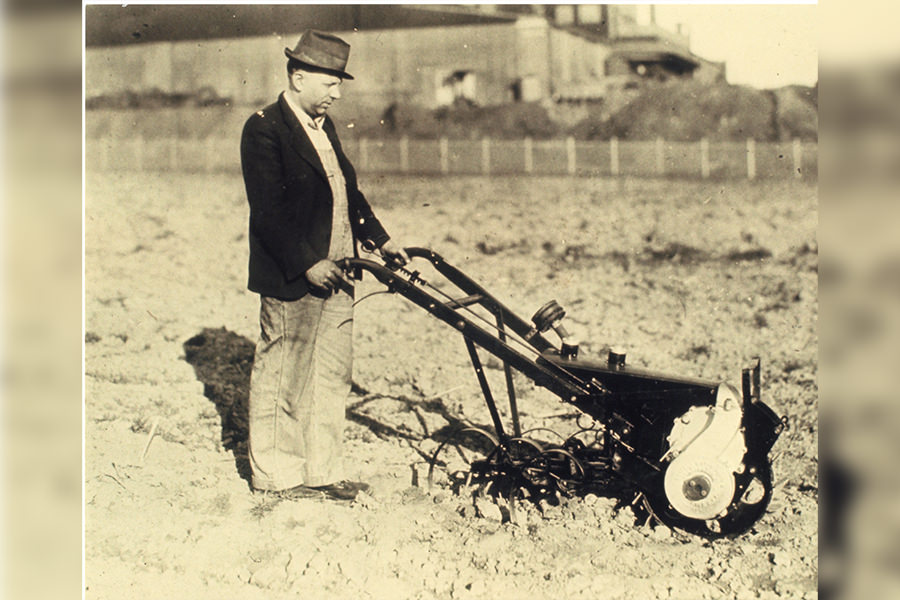
Things hit a positive note when Mr. D Ray Hall became president of the Gravely Motor Plow and Cultivator Company, and the losses turned into profits. At that time, the Model L was redesigned, more attachments were released, and it became the first all-gear drive transmission in the garden tractor industry.
During World War II, the Model D and Model L tractors played a considerable role in helping to cultivate farms and victory gardens for the war effort. The next hurdle was the limited number of machines available for farmers in the country during a time of material rationing. The government and armed services worldwide ordered so many units that it took a lot of work to fulfill customer orders.
Due to such high demand, the company launched a Buy in Advance program where customers would place an order with a deposit to be placed on a list when the equipment was produced and available. The demand became even higher when the United Nations Relief and Rehabilitation Administration (UNRAA) ordered over 1,000 tractors in 1945. Additionally, the company had those who took advantage of the Buy in Advance program and people who wanted to move into the country and needed a tractor. To state the obvious, demand skyrocketed at a fast pace.
Throughout the next decade, the company grew from the well-known Gravely Motor Plow and Cultivator Company to Gravely Tractor, Inc. With the growing popularity came growing changes; sales hit over $5 million, the Model D was discontinued, and production focused on the Model L as demand increased.
This increase in sales also meant the company needed to think about expansion. In 1956 Gravely Tractor, Inc built a plant in Albany, Georgia, making that the second plant with the original plant and headquarters staying in Dunbar, West Virginia.
In 1960 Gravely purchased Winchell Manufacturing Company in Kansas, which built the Clean-Cut mower. They kept the product and rebranded it under the Gravely Tractor name. Financially struggling, Gravely Tractor Inc was sold to Studebaker Packard Corporation.
Studebaker looked to Gravely as a way to diversify products and began developing the first 4-wheel tractor, the Gravely Westchester. Unfortunately, the tractor was plagued with numerous issues to the point where they issued a buy-back program to anyone who purchased a Westchester and salvaged the parts from the machine. After the rough experience with the Westchester, the Gravely Clean-Cut mowers were also dropped from the Gravely product line, and the Kansas based plant shut its doors.

By 1967, Studebaker Packard Corporation merged with Worthington Corporation becoming Studebaker-Worthington Corp. Even with the issues that arose from the Gravely Westchester, the company returned to the drawing board, and by 1966 the Gravely 424 Lawn Tractor was introduced. Gravely was still a significant producer in the two-wheel market, and by 1968 Gravely tractors were being exclusively produced at a new factory in Clemmons, North Carolina. Due to the versatility of the two-wheel tractors, they remained in production until 1976.
The following year was pivotal for the company as the choice was made to establish two separate product lines, a commercial line and a consumer line. At the time, Gravely didn't have a commercial product, and the main difference between the two product lines was the size of the engines in the 2-wheel and 4-wheel units. One of those 4-wheel units was the ProMaster, an early version of the zero-turn you know today.
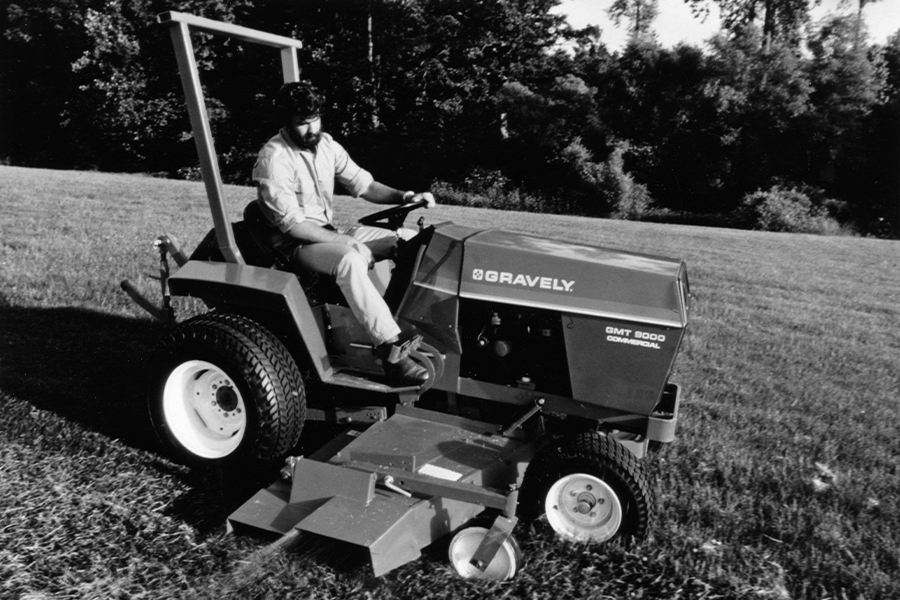
Once commercial and consumer product lines were implemented, the next couple of years consisted of releases such as the Gravely GMT 9000 tractors and the 8000 series.
Then came a critical year in the Gravely story. 1981 marked the year the president of Gravely, Pete Janke, was tasked with finding a buyer for the business. With deep roots in the Brillion community, he contacted Ariens Company about the opportunity, but Ariens declined. After the first attempt, Janke found another buyer who seemed very promising, but they also passed on the sale.
With two attempts in the books, he didn't give up. Janke returned to the drawing board and approached Ariens Company one more time. After several months of negotiations, the purchase was finalized in 1982, and ten years later, Gravely was moved to Brillion, Wisconsin, the headquarters of AriensCo.
Ten years after Gravely relocated, the Clemmons facility was put up for sale. Five years later, Gravely's sales and marketing were moved from North Carolina to Wisconsin, thus having both brands within AriensCo. Over the years, Gravely has continued to succeed in the modern-day zero-turn market while offering utility terrain vehicles and loaders.
Benjamin Gravely could've done many things differently, but despite all the mishaps, he stayed true to what he knew was necessary. He was innovative, never gave up, and always wanted what was best for his customers and employees. His legacy and innovation are celebrated and never forgotten as the brand grows within the AriensCo family.
For more Gravely history, click here.
